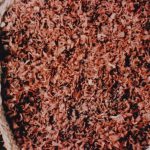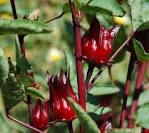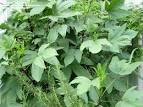Hibiscus sabdariffa
Uses
India (Uttar Pradesh, Balrampur region): unripe fruit cooked and eaten. Ripe fruit are dried and eaten whole or ground and made into sattu, a porridge. The flowers are boiled and eaten as a vegetable. The outside of the ripe fruit is made into chutney. Sudan: although a cultivated plant, intensive usage was reported during famine. Leaves were eaten green or dry, cooked with onions and groundnuts. Flower calyxes were used for tea, and as a base for jam. Seeds were pressed for oil, and the remaining cake was cooked seasoned with Kambo, a local condiment.
A Niger leaf sample shows a protein value of 16.9%
Additional Information
- Name Authority:
- L.
- Vernaculars:
- Arabic: Karkady. India – (Hindi): Dana Petwar
- Misc:
- Chemical composition (calyx): Protein (crude) = 10.9% (dry). Fat = 1.1% (dry). Fibre (crude) = 10.7% (dry). Ash (insoluble) = 11.5% (dry). Carbohydrate (soluble): Starch = 2.8% (dry). Sucrose = Ø %. D-glucose = 3.5% (dry). D-fructose = 0.9% (dry). Amino acids (g [16g N]-1): Aspartic acid = 39.0g. Threonine = 1.8g. Serine = 2.0g. Glutamic acid = 6.9g. Proline = 3.9g. Glycine = 2.4g. Alanine = 2.4g. Valine = 2.4g. Cysteine = 0.3g. Methionine = 0.7g. Isoleucine = 2.0g. Leucine = 3.0g. Tyrosine = 1.1g. Lysine = 2.6g. Phenylalanine = 1.7g. Lysine = 2.6g. Histidine = 1.5g. Arginine = 2.5g. Minerals: Sulphur = 0.13% (dry). Potassium = 0.13% (dry). Magnesium = 0.33% (dry). Calcium = 1.29% (dry). Na = 0.01% (dry). K = 2.53% (dry). Zinc = 41mg/kg-1 (dry). Iron = 97mg/kg-1 (dry). Manganese = 416mg/kg-1 (dry). Copper = 5mg/kg-1 (dry). Aluminum = 66mg/kg-1 (dry).




